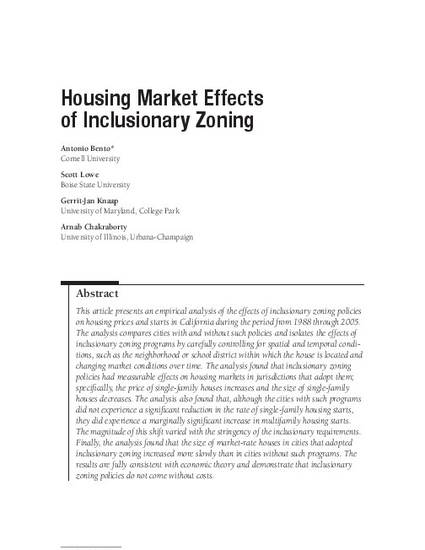
This article presents an empirical analysis of the effects of inclusionary zoning policies on housing prices and starts in California during the period from 1988 through 2005. The analysis compares cities with and without such policies and isolates the effects of inclusionary zoning programs by carefully controlling for spatial and temporal conditions, such as the neighborhood or school district within which the house is located and changing market conditions over time. The analysis found that inclusionary zoning policies had measurable effects on housing markets in jurisdictions that adopt them; specifically, the price of single-family houses increases and the size of single-family houses decreases. The analysis also found that, although the cities with such programs did not experience a significant reduction in the rate of single-family housing starts, they did experience a marginally significant increase in multifamily housing starts. The magnitude of this shift varied with the stringency of the inclusionary requirements. Finally, the analysis found that the size of market-rate houses in cities that adopted inclusionary zoning increased more slowly than in cities without such programs. The results are fully consistent with economic theory and demonstrate that inclusionary zoning policies do not come without costs.
Available at: http://works.bepress.com/scott_lowe/5/
